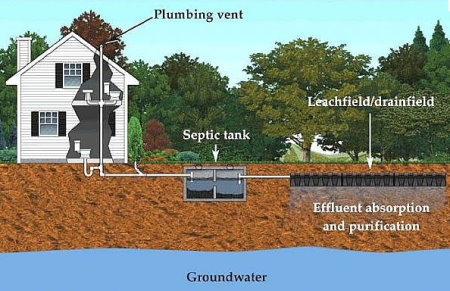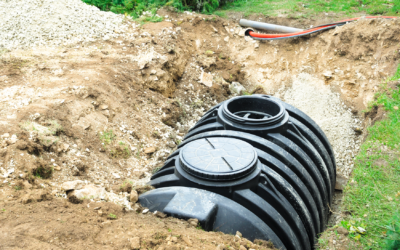Reliable Septic Installations for Residential Residences
When it comes to the important framework of domestic buildings, trustworthy septic installations play an important role in making certain effective waste monitoring systems. Comprehending the details of septic setups, from choosing the appropriate system to the installation procedure and subsequent maintenance, is critical for home owners seeking a dependable and sturdy service for their property's sewage needs.

Advantages of Dependable Septic Setups
Setting up a reliable septic system not only makes sure reliable wastewater management however additionally advertises ecological sustainability and residential or commercial property value retention. By spending in a properly designed septic system, house owners can dramatically reduce the risk of groundwater contamination and surface water pollution. Correctly treated wastewater from septic tanks can help protect local water sources and communities, adding to a healthier environment for both current residents and future generations.

In addition, a reliable septic system can enhance the total building worth. Potential buyers are frequently ready to pay more for a home with a properly maintained septic tank in location, as it represents a commitment to building maintenance and ecological responsibility. This can offer home owners a competitive edge in the actual estate market and make sure a better return on financial investment over time.
Choosing the Right Septic Tank
After recognizing the advantages of reputable septic installations, the following critical action for homeowners is to meticulously choose the ideal septic tank that straightens with their residential or commercial property's specific requirements and ecological considerations. When picking a septic system, it is necessary to think about elements such as residential or commercial property dimension, soil kind, water table level, and neighborhood regulations.
For smaller residential or commercial properties or those with minimal space, a traditional septic tank might be appropriate. These systems are composed of a septic tank and a drain field and work for residential properties with enough soil permeability. On the other hand, larger buildings or areas with high water tables may need more advanced systems like cardio therapy devices or pile systems to guarantee appropriate wastewater therapy.

It is additionally important to assess the maintenance requirements and lasting prices related to various septic tanks. Homeowners should consider elements such as pumping frequency, examination demands, and possible repair services when making their choice. By meticulously examining these factors to consider, property owners can select a septic system that not just fulfills their property's demands yet likewise advertises ecological sustainability.
Variables to Think About Prior To Installation
Before continuing with the installment of a septic tank, complete site assessment and soil screening are vital steps to make sure optimal functionality and long life of the system. Site evaluation entails evaluating factors such as the property's topography, directory closeness to water resources, and the size of the residential property to figure out the most appropriate location for the septic system. Dirt testing is essential to recognize the soil make-up and its capability to properly treat and filter wastewater. The soil's leaks in the structure, texture, and deepness play a significant duty in identifying the kind and size of the septic tank needed. In addition, local laws and permits need to be considered prior to installation to make certain compliance with ecological and health requirements (water line repair lancaster oh). Assessing the building's water level degree is also crucial, as a high water table can affect the system's performance. By meticulously considering these aspects prior to installment, homeowners can make sure a trusted and efficient septic system tailored to their building's particular demands.

The Setup Process Explained
To commence the setup process of a septic tank for a home, the very first step includes careful excavation of the marked area adhering to the authorized site strategy. This excavation is vital as it sets the structure for the entire septic system. When the area is dug deep into to the needed deepness and measurements, the next action is the setup of the septic container. The septic system is placed in the ground, making certain appropriate placement and progressing. Adhering to the tank setup, the drain field pipelines are laid out in trenches loaded with crushed rock to help with correct drainage. The pipelines are then covered with soil, permitting the effluent to gradually filter right into straight from the source the surrounding ground. After the setup is total, a last evaluation is performed to ensure that the septic tank fulfills all policies and functions effectively. Appropriate installment is important for the long-lasting capability and Visit Your URL efficiency of the septic system, making certain a trusted wastewater treatment option for the house.
Maintenance Tips for Longevity
Correct maintenance of the septic system is critical to guarantee its long life and proceeded reliable procedure, adhering to the meticulous installation process essential for property buildings. Furthermore, being mindful of what is flushed down the drains can considerably influence the health of the septic system. Keeping a healthy and balanced drainpipe area by abstaining from driving or developing over it, planting trees at a safe range, and avoiding the use of hefty equipment on the area can extend the overall lifespan of the septic system.
Verdict
By picking the best septic system and considering crucial factors before installment, homeowners can enjoy an easy and long-lasting service. The installment process ought to be lugged out carefully, and normal maintenance is required to extend the life-span of the septic system.